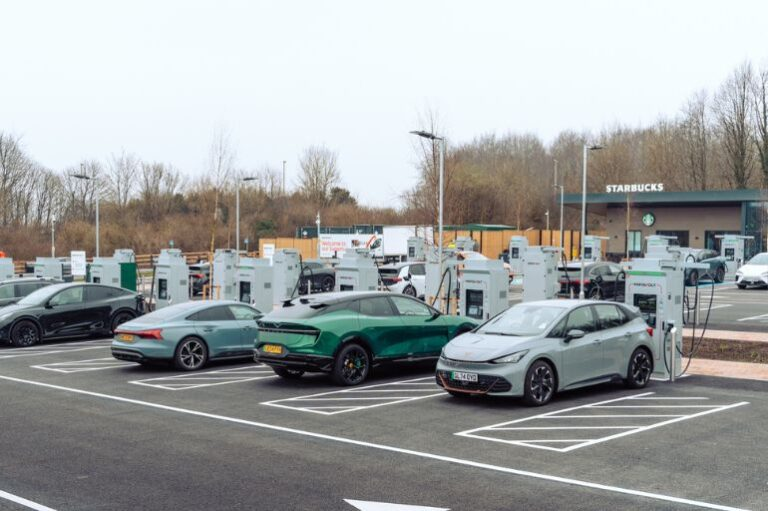In a pioneering move that underscores the shift in global automotive landscapes, Brazil has emerged as a surprising leader among emerging markets in the electric vehicle (EV) revolution. According to a recent report from Bloomberg Green, Brazil’s EV sales surged by over 30% in the past year, outpacing many developed nations. This burgeoning enthusiasm for electric cars is reshaping Brazil’s transport infrastructure and setting the stage for other emerging markets to follow suit. In this article, we’ll explore Brazil’s bold strides in electrification, how similar markets are following their lead, and what this means for the future of global mobility.
Brazil’s Electric Revolution: A New Era for Transportation
As one of the largest economies in Latin America, Brazil’s commitment to electric vehicles is more than a mere trend—it’s a strategic pivot towards sustainable energy and reduced carbon emissions. Here are some key factors propelling Brazil’s EV market forward:
Government Initiatives and Incentives
The Brazilian government has been instrumental in fostering the EV sector’s growth. In 2022, it introduced a range of incentives, including tax breaks and subsidies for both consumers and manufacturers. These measures have helped lower the cost of electric vehicles, making them more accessible to the average Brazilian consumer.
- Tax Exemptions: Electric cars enjoy significant tax exemptions, reducing their price by up to 20%.
- Subsidies for Manufacturers: Companies like BYD and Volkswagen have received financial support to enhance local production capabilities.
Expansion of Charging Infrastructure
The rapid expansion of Brazil’s EV charging infrastructure is another critical factor boosting adoption rates. With over 1,500 charging stations installed nationwide by the end of 2023, Brazil aims to make EV charging as convenient as refueling traditional vehicles.
- Public Charging Stations: Located in urban centers and along major highways.
- Private Initiatives: Companies like Enel X and Shell have partnered to deploy fast-charging networks.
Emerging Markets: Following Brazil’s Lead
While Brazil is leading the charge, several other emerging markets are also making significant strides in electrification. Countries like India, Thailand, and South Africa are beginning to see similar trends, driven by environmental concerns and technological advancements.
India: The Two-Wheeler Revolution
In India, the focus is on electric two-wheelers, which dominate the transportation landscape. Brands such as Hero Electric and Ola Electric are spearheading the shift, with sales expected to double by 2025.
- Battery Swapping: Innovative solutions like battery swapping stations are enhancing convenience.
- Government Support: Policies aim to achieve 30% electrification of vehicles by 2030.
Thailand: The Hub of Southeast Asia
Thailand is positioning itself as Southeast Asia’s EV manufacturing hub, with significant investments from global brands like Nissan and Hyundai. The Thai government has set an ambitious goal of producing 750,000 EVs annually by 2030.
South Africa: Overcoming Challenges
Despite facing infrastructural hurdles, South Africa is making headway in the EV sector. Efforts are focused on developing local battery production capabilities and expanding charging networks.
Practical Tips for Navigating the EV Market in Emerging Economies
As emerging markets embrace the EV transition, consumers and policymakers alike can benefit from the following strategies:
How to Charge Your EV Efficiently
- Plan Your Route: Use apps like PlugShare to locate charging stations.
- Optimize Charging Times: Charge during off-peak hours to save costs.
- Use Fast Chargers Sparingly: While convenient, frequent use can degrade battery life.
Where to Buy an Electric Vehicle
- Local Dealerships: Offer test drives and financing options.
- Online Platforms: Websites like AutoTrader list new and used EVs.
What to Compare When Buying an EV
- Range and Battery Life: Consider your daily travel needs.
- Charging Time: Ensure compatibility with local infrastructure.
- Cost and Incentives: Take advantage of available subsidies.
Conclusion: The Future of EVs in Emerging Markets
Brazil’s bold move towards electrification is a testament to the potential of emerging markets to drive significant change in the global EV landscape. With strategic investments, supportive policies, and growing consumer interest, the future looks promising for electric vehicles in these regions. As more countries follow Brazil’s lead, we can expect a more sustainable and innovative mobility future.
What do you think about the rise of electric vehicles in emerging markets? Share your thoughts in the comments below. As we look ahead, it’s clear that the electrification wave will continue to gain momentum, redefining transportation and energy consumption worldwide. Let’s stay tuned to see how these markets evolve and contribute to a greener planet.

